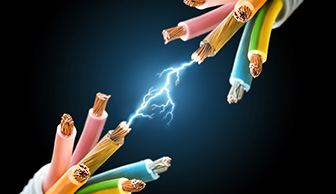1. What types of commonly used wires and cables are cla […]
1. What types of commonly used wires and cables are classified by purpose?
According to the purpose, it can be divided into bare wires, insulated wires, heat-resistant wires, shielded wires, power cables, control cables, communication cables, radio frequency cables, etc.
2. What kinds of insulated wires are there?
Common insulated wires include the following types: PVC insulated wires, PVC insulated cords, nitrile and PVC compound insulated cords, rubber insulated wires, direct buried aluminum core plastic insulated wires for agricultural use, and rubber insulated cotton yarns. Wire, PVC insulated nylon sheathed wire, PVC insulated cord for power and lighting, etc.
3. What kind of occasion is the cable tray suitable for?
The cable tray is suitable for the overhead laying of power cables and control cables indoors and outdoors in general industrial and mining enterprises, and can also be used for indoor and outdoor installations in telecommunications, broadcasting and television departments.
4. What are the cable accessories?
Commonly used electrical accessories include cable terminal junction boxes, cable intermediate junction boxes, connecting pipes and terminals, steel plate wiring slots, cable trays, etc.
5. What is the cable middle connector?
The device that connects the cable and the cable's conductor, insulation shielding layer and protective layer to connect the cable line is called the cable intermediate joint.
6. What is electrical main wiring?
Electrical main wiring is the connection method of main electrical equipment and bus in power plants and substations, including the connection method of main bus and auxiliary power system according to certain functional requirements.
7. When choosing the cross section of the power cable, which regulations should be followed?
The selection of power cables should follow the following principles:
(1) The rated voltage of the cable should be greater than or equal to the rated voltage of the power supply system at the installation point;
(2) The continuous allowable current of the cable should be equal to or greater than the maximum continuous current of the power supply load;
(3) The cross-section of the core must meet the requirements of stability of the power supply system when it is short-circuited;
(4) Check whether the voltage drop meets the requirements according to the cable length;
(5) The minimum short-circuit current at the end of the line should enable the protection device to operate reliably.
8. What are the advantages of XLPE cables and oil-paper cables?
(1) Easy to install, because it allows a small minimum bending radius and light weight;
(2) Not restricted by line drop;
(3) Good thermal performance, high allowable working temperature and large transmission capacity;
(4) The cable accessories are simple and all are dry structure;
(5) Simple operation and maintenance, no oil leakage problem;
(6) The price is lower;
(7) High reliability and low failure rate;
(8) There are few manufacturing procedures, simple process and remarkable economic benefits.
